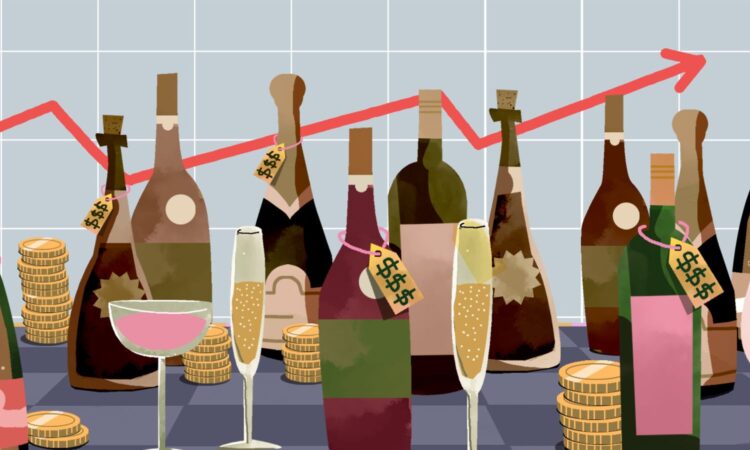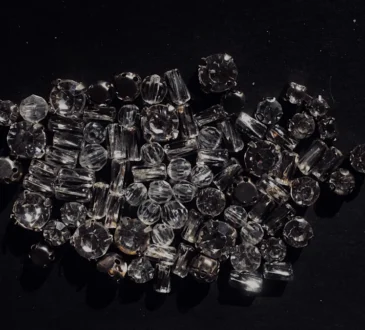
Key Takeaways
- Diversifying a wine portfolio is essential to maximize liquidity and returns.
- Market intelligence is essential to track price trends, evaluate bottles, and follow the industry more broadly.
- Professional investment vehicles focused on the fine wine space can provide a hands-off approach, but come with added costs and risks.
- Adequately storing, insuring, and securing a fine wine portfolio is vital to protect your investment.
Many investors exploring the world of wine as an asset start with a handful of bottles or a platform account. However, the real challenge (and opportunity) lies in taking a portfolio from “starter” to strategically optimized.
Wine investment may not be for the average investor, but for those with the resources, this space can be both personally and financially rewarding. Below, we detail some of the considerations to keep in mind for those looking to take an early-stage wine portfolio to the next level.
Step 1: Diversify Beyond Bordeaux
Top-tier wine investors look beyond the classic regions of Bordeaux and Burgundy to find lesser-known wines capable of increasing in value. Expanding your wine portfolio also offers protection against a poor vintage or shifts in demand.
Opportunities exist in many regions worldwide, with some of the best places to look including Tuscany, Napa, and Champagne. Emerging areas that wine investors may be inclined to overlook include Australia, Argentina, and India, among others.
Tip
When selecting wines from outside traditional regions, investors should focus on flagship wines and those produced by well-respected makers.
As in any investment, proper diversification in a wine portfolio is key to protecting against risk and providing broad access to potential gains. Many investors view fine wine itself as a diversifier in a traditional portfolio, given historically low correlation rates between the wine market and both the S&P 500 as well as the MSCI World Index. However, keep in mind that diversification within wine holdings themselves can protect and increase the value of those holdings.
Step 2: Upgrade Your Market Intelligence
Numerous tools and resources exist for advanced monitoring of the wine market, and it’s important that experienced wine investors use them to determine which bottles to buy, when to buy them, and how long to hold them before attempting to sell.
- The Liv-ex Indices are linked to the London International Vintners Exchange. This tool tracks the performance of wines on both a regional and a more generalized level and is helpful when monitoring the market more broadly.
- Wine-Searcher Pro, on the other hand, is a platform for individual bottles and shops and can be a useful way to follow the price of individual wines.
- Decanter magazine is a go-to resource for insight into the latest trending vintners, bottles, and regions. Its Decanter World Wine Awards provide an annual snapshot of the industry.
Tom Gearing, CEO of Cult Wines, suggested that investors searching for new wines to buy perform a SWOT analysis using platforms like CultX or BBX and tools like Liv-ex. Additionally, Gearing added to “keep tabs on auction results” to follow industry trends.
Getting Started with Wine Investing
Step 3: Consider Professional Vehicles
Want to get the benefits of a broad fine wine investment without focusing on the details or worrying about storage, authentication, and security? Several alternative approaches to the industry may appeal instead of (or in addition to) owning bottles themselves.
Specialized Wine Funds
These funds pool capital from multiple investors to purchase, store, and manage a collection of fine wine. This allows individual investors to take a hands-off approach and has the benefit of relying on industry professionals to make investment decisions. On the other hand, expect to pay management fees that may be quite steep (even up to 20% of profits, in some cases).
Fine Wine Syndicates and Private Collections
Functioning somewhat similarly to a wine fund, these generally provide investors with fractional ownership of a collection. The syndicate managers will typically handle sales and then distribute proceeds pro rata to each investor. Like specialized funds, these options reduce the active work for each investor, but fees may cut into returns. Plus, investors have little to no say in the collection itself and any transactions.
Vineyard Equity or Shares
Shares can be another way to indirectly participate in the fine wine market. While owning a vineyard outright is logistically and financially prohibitive for many, buying equity in an existing vineyard may be a more approachable option.
In addition to the potential for a share of revenue from wine sales, this may also provide investors with the benefits of distribution partnerships, wine tourism, and land appreciation. Of course, the vineyard’s success depends on its wine’s popularity, so this is a fairly risky approach.
Step 4: Optimize Storage, Insurance, and Security
Upgrading a fine wine collection means taking storage, insurance, and security seriously. Professional wine storage can be either self- or full-service, and the latter option often includes everything from authentication and climate control to shipping services and security. The cost of these services may vary considerably depending upon your location and the size of your collection.
Tip
Some investors go a step further by storing their wine in multiple locations to minimize the risk associated with fire, theft, or other similar events, or by utilizing bonded warehouses to better control taxes on imported bottles.
Investors with large or high-value collections will also want to purchase enhanced insurance coverage. Consult with an insurance expert for advice on your portfolio, but remember that it may be necessary to purchase a standalone policy or schedule high-value bottles individually.
Any fine wine collection requires adequate security regardless of where it is stored. This includes not only protection against theft, but also, measures to ensure bottles can be properly authenticated, provenance can be tracked, and fraud can be minimized. Blockchain has proven to be a helpful tool to increase consumer trust and transparency, and is likely to continue to play a growing role for many wine investors going forward.
Gearing suggested those purchasing wines for investment should focus on bottles “that have a track record of bonded storage” since they were released onto the market (“request a photo if unsure,” he adds). He says this is less important “if purchasing the latest vintage releases from established merchants,” because “the wines will have come directly from the winery” in that case.
Step 5: Manage Exit Strategies and Liquidity
Ironically, fine wine is generally considered a highly illiquid asset class. The market for investment-grade bottles is small, price transparency is often lacking, and the costs associated with transacting are steep, among other reasons.
To maintain the liquidity of your collection, authenticate each bottle, track its provenance, and store your wine in a manner that is likely to preserve its quality. Understanding market trends is also key, as it enables you to select bottles that are more likely to appeal to other investors. Exiting a wine position successfully requires balancing those market trends against the maturity of the bottle.
One of the major hurdles for wine investors looking to sell is finding a buyer. Fortunately, there are a growing number of auction services, private sales platforms, and other marketplaces connecting participants in the wine market on a global scale, including WineBid, Vinovest Exchange, and many others.
Evaluating Wine as an Asset Class
Step 6: Integrate Into Broader Wealth Planning
The percentage allocation of wine in a broader investment portfolio depends on a multitude of factors, including investor interest, assets, risk tolerance, and investment goals. J.P. Morgan Private Bank, which provides wealth management and other services to high-net-worth individuals, recommends that clients committed to a focus on private markets allocate 15-30% of their investible funds to alternative assets. However, these assets can run the gamut from fine wine to private equity, real estate, art, and more, and experts at J.P. Morgan suggest focusing at least half of an alternative asset allocation on private equity specifically.
Taylor Gang, CFP, AIF, managing director, partner, and wealth manager of Evensky & Katz/Foldes Wealth Management—and proprietor and winemaker for Gang Family Cellars—added that an ultra-high-net-worth investor “generally has fewer concerns with illiquidity than investors who are actively living off a higher percentage of their portfolio assets.” For that reason, that investor may “allocate a higher percentage of their overall portfolio to alternative asset classes,” including fine wine.
Gang noted that UHNW portfolios may see 20-25% alternative asset class investments, while high-net-worth individuals may be more likely to fall within the 10-15% range. To achieve index return on a fine wine investment, Gang said, “the investor must be invested for the whole period,” meaning that “those with a longer-term focus will likely see better results.”
Regardless of your wine allocation, consult with a professional in your jurisdiction to be fully aware of the tax implications and how to maximize your returns through the most tax-efficient investment approach.
How Do I Scale From a $50K Wine Portfolio to a $500K+ Portfolio?
Scaling a wine portfolio requires broad diversification of your wine holdings, careful monitoring of the market, and expanding your storage, security, and insurance coverage to protect and grow your investment.
What Advanced Tools Do Professionals Use To Track Wine Performance?
Professionals use tools including Liv-ex Indices, Wine-Searcher Pro, and insights from Decanter and other respected publications to track the industry in various ways.
Is It Worth Buying Vineyard Equity Versus Just the Wine?
Vineyard equity offers the opportunity to generate not only revenue from wine sales but also profits from wine tourism, events, distribution partnerships, and more. However, there are unique risks associated with owning a stake in a vineyard, including weather and climate concerns, issues related to the quality and marketability of the wine itself, and more.
The Bottom Line
Fine wine investing is a niche corner of the alternative assets space, but it can nonetheless be a rewarding and lucrative opportunity. To take a fine wine investment to the next level, you’ll need to develop a deep understanding of the market using tracking tools and other insights, diversify your holdings, and up your storage, security, and insurance coverage. Using professional platforms and alternatives such as vineyard equity can support this growth.




